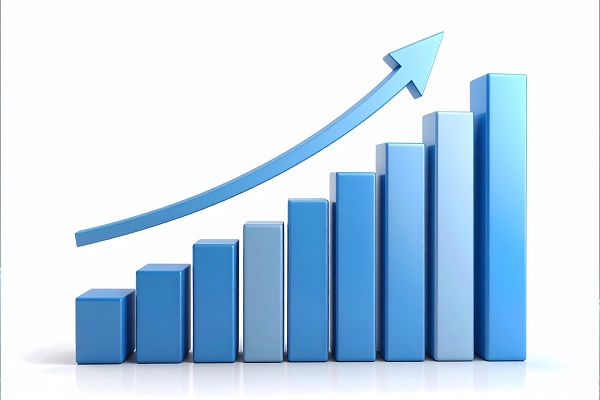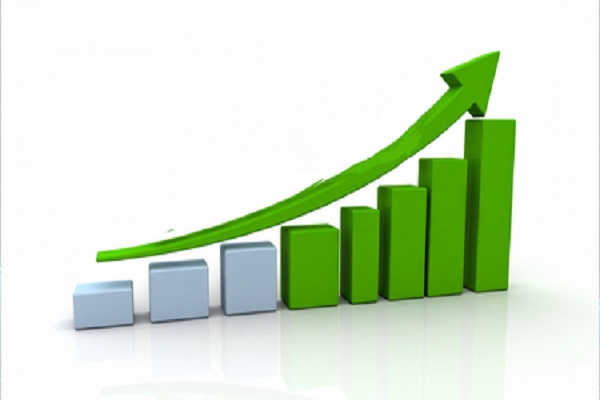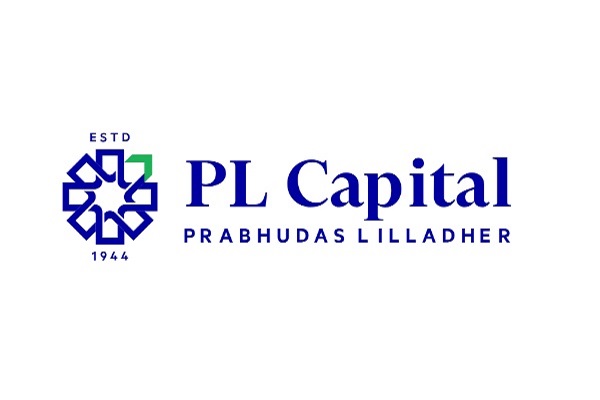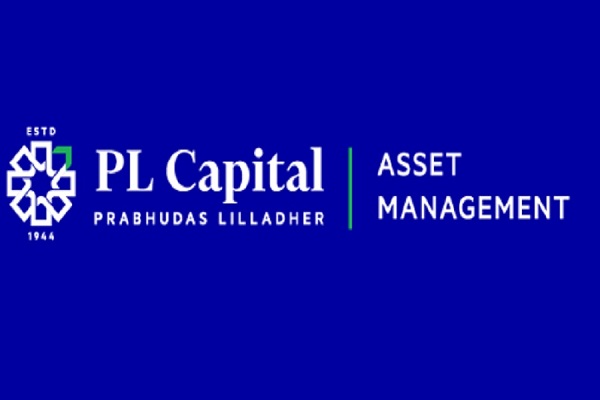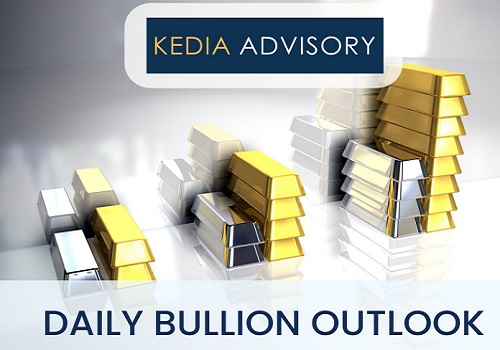Silver trading range for the day is 106930-110570 - Kedia Advisory

Gold
Gold prices remained virtually unchanged, settling at 99,537, as a stronger U.S. dollar offset safe-haven demand sparked by escalating geopolitical tensions. The Iran-Israel conflict extended into its sixth day, with Israel confirming strikes near Tehran and Iran launching missiles in response. Speculation intensified after U.S. President Trump met with his national security team, raising concerns that the U.S. could enter the conflict, which added a layer of uncertainty to global markets. However, gold’s upside was restrained as investors remained cautious ahead of the U.S. Federal Reserve’s upcoming policy decision, especially amid lingering tariff uncertainties and recent weak U.S. economic data. In terms of fundamental support, a World Gold Council survey revealed that 95% of central banks expect global gold reserves to rise in the coming year, with a record 43% planning to increase their own holdings. This sentiment aligns with bullish long-term forecasts from major institutions like Goldman Sachs and Bank of America, both of which project gold could reach $4,000/oz by mid-2026. Despite firm investment flows, physical gold demand in major Asian markets has weakened due to soaring prices. Indian dealers offered steep discounts of up to $63/oz—the highest in seven weeks—to encourage buying after local prices breached the 100,000 mark. Technically, the market showed signs of fresh selling as open interest rose slightly by 0.12% to 14,950. Gold has immediate support at 99,180; a break below could test 98,815. Resistance is seen at 99,840, and a move above could lead to 100,135.
Trading Ideas:
* Gold trading range for the day is 98815-100135.
* Gold steadies as stronger dollar offsets safe-haven bids amid Middle East tensions.
* The Federal Reserve left the federal funds rate unchanged at 4.25%–4.50% for a fourth consecutive meeting in June 2025
* US housing starts dropped sharply by 9.8% month-over-month in May 2025 to a seasonally adjusted annual rate of 1.256 million units.
Silver
Silver prices slipped by 0.39% to settle at 108,566, following a bout of profit booking after prices hit a fresh all-time high of 109,500 on the MCX and surged past $37.20 in the international market—the highest level since 2012. The initial rally was fueled by robust industrial demand, ongoing supply constraints, and heightened geopolitical tensions. Silver’s role in solar energy, electronics, and broader electrification now makes up over 50% of total global demand, reinforcing its structural importance in the green economy. Despite the slight pullback, the long-term outlook for silver remains bullish. The Silver Institute projects the market will face its fifth consecutive annual deficit in 2025, estimated at 117.6 million troy ounces. Although this represents a 21% narrowing of the deficit due to a 2% supply rise and 1% drop in demand, key industrial demand remains strong. Silver fabrication demand is forecast to hit a record high above 700 million ounces this year, while physical investment demand is projected to grow 3% amid renewed interest from Western investors adjusting to higher prices. On the downside, jewellery and silverware demand is expected to decline by 6%, with India accounting for a large portion of the losses due to high local prices. Technically, the market is under long liquidation, with open interest falling sharply by 12.11% to 15,784, indicating profit-taking after recent gains. Silver finds immediate support at 107,750, with a further drop possibly testing 106,930. On the upside, resistance is seen at 109,570; a break above could push prices toward 110,570.
Trading Ideas:
* Silver trading range for the day is 106930-110570.
* Silver slips on profit booking from record high of ?109,748.
* Prices had surged past $37.20 globally, highest since 2012, driven by strong fundamentals.
* Silver Institute forecasts fifth straight annual deficit in 2025 at 117.6 million ounces.
Crude oil
Crude oil prices edged higher by 0.56% to settle at 6,334 as investors weighed the escalating Iran-Israel conflict and its potential to disrupt global oil supply. Israel confirmed strikes near Tehran, with Iran responding via missile launches, stoking fears of a broader regional escalation. U.S. President Trump's meeting with his national security team added to speculation that the U.S. could become directly involved. However, despite the intensifying conflict, Iran's oil-exporting infrastructure remains untouched, and disruptions have largely been limited to shipping, which has helped temper market panic. Russian Deputy Prime Minister Alexander Novak reassured markets that the global oil supply remains balanced, suggesting no immediate shortage despite rising geopolitical risks. He noted that whether oil prices surge to $100 per barrel would depend largely on market reaction to these risks. On the supply side, record U.S. oil production and rising OPEC+ output continue to anchor prices. A significant bullish trigger came from U.S. inventory data. Crude oil stockpiles fell by a massive 11.473 million barrels for the week ending June 13—the largest draw in a year and far exceeding expectations of a 2.3 million barrel decline. Cushing hub inventories also fell by 995,000 barrels. However, gasoline and distillate stocks posted modest builds, slightly balancing the bullish tone. Technically, the market is witnessing fresh buying, with open interest jumping by 25.39% to 8,816. Crude finds support at 6,182; below this, prices could test 6,031. Resistance is now at 6,457, and a break above could take prices toward 6,581.
Trading Ideas:
* Crudeoil trading range for the day is 6031-6581.
* Crude oil gains on Iran-Israel conflict, possible U.S. role stokes supply fears.
* Russia's Novak says Middle East conflict is not causing a shortage of oil
* Crude oil inventories in the US fell by 11.473 million barrels in the week that ended June 13, 2025.
Natural gas
Natural gas prices surged 4.71% to settle at 344.6, driven by forecasts for hotter-than-normal July weather across the Lower 48 U.S. states and a rebound in LNG export activity. The rise comes as recent maintenance at major LNG terminals—Cameron, Sabine Pass, and Corpus Christi—winds down, with feedgas flows expected to recover in the coming weeks. LNG demand has averaged 14.1 bcfd in June, down from 15.0 bcfd in May and April’s record 16.0 bcfd, but expected to rise again shortly. The persistent heat is also boosting domestic cooling demand, adding to upward pressure on prices. On the supply side, Lower 48 output ticked up to 105.3 bcfd, with daily highs hitting 106.4 bcfd—an eight-week peak. Storage levels also rose, with U.S. utilities injecting 95 bcf of gas into storage for the week ending June 13, in line with expectations. Total inventories now stand at 2.802 trillion cubic feet, 7.7% below last year’s level but 6.1% above the five-year average, helping maintain a bullish sentiment. According to the U.S. Energy Information Administration (EIA), both natural gas production and demand are expected to reach record levels in 2025. Technically, the market is under fresh buying, with open interest jumping by 24.46% to 16,774. Natural gas has support at 334.5, with further downside at 324.4. Resistance is now seen at 350.1, and a break above could lift prices toward 355.6.
Trading Ideas:
* Naturalgas trading range for the day is 324.4-355.6.
* Natural gas climbed as hotter-than-normal July weather and rebounding LNG exports drive up demand.
* LNG exports rebound as key U.S. terminals resume post-maintenance operations.
* June LNG feedgas demand averages 14.1 bcfd, below April highs.
Copper
Copper prices edged up slightly by 0.02% to settle at 879.9 as investors positioned themselves ahead of the U.S. Federal Reserve’s policy announcement. Market sentiment was cautious amid signs of a slowing U.S. economy, with May retail sales falling more than expected, and renewed geopolitical tensions following U.S. President Donald Trump’s aggressive stance against Iran. Despite the minor price gain, fundamental signals reflect mixed momentum. LME copper inventories dropped by 7,300 tons to 107,325 tons—the lowest in over a year and a 60% decline in the last four months—indicating tightening near-term availability. However, the Comex premium over LME narrowed to $927 a ton, down from $969, suggesting easing transatlantic demand. Chinese smelters are ramping up exports amid softening local consumption, while copper concentrate imports into China fell 18% month-on-month in May to 2.4 million tons, though still up 5.8% year-on-year. On the supply side, Ivanhoe Mines resumed partial operations at its Kakula mine in the DRC but revised down its annual production guidance, citing earlier seismic disruptions. According to ICSG, the global refined copper market posted a 17,000 metric ton surplus in March, down sharply from 180,000 tons in February, signaling a tighter market. Technically, copper is in short covering, with open interest dropping by 18.12% to 3,277. Support lies at 877.9, with further downside potential to 875.7, while resistance is at 882.8, and a breakout could lift prices toward 885.5.
Trading Ideas:
* Copper trading range for the day is 875.7-885.5.
* Copper gains as investors positioned ahead of the US Federal Reserve’s policy announcement.
* U.S. economy was slowing amid President Trump's shifting tariff policies, with retail sales falling more than expected in May.
* China's refined copper production in May climbed by 13.6% from the prior year to 1.25 million metric tons.
Zinc
Zinc prices edged up by 0.20% to settle at 253, supported by stronger-than-expected retail sales in China, which offered a temporary boost to metals demand sentiment. While China’s factory output growth hit a six-month low in May, the resilience in consumer spending helped ease fears of a broader economic slowdown. However, upside momentum remained limited as optimism faded following lackluster U.S.-China trade negotiations and persistent concerns over weak manufacturing activity, particularly in China. Chinese buyers are restricting zinc purchases to immediate needs amid sluggish demand, and speculative interest has also eased as traders await clearer signals of recovery. Additionally, China’s export growth fell short of expectations in May, particularly due to declining shipments to the U.S. amid ongoing trade tensions. These factors continue to weigh on zinc's broader outlook. On the supply side, global zinc fundamentals provided mixed cues. Teck Resources' Red Dog Mine—the world’s largest zinc mine—reported a 20% year-on-year production drop in Q1 2025, while Australian smelter Nyrstar announced a 25% production cut this year due to uncompetitive treatment charges. According to the ILZSG, the global zinc surplus narrowed to 23,700 metric tons in March from 75,900 tons in February. Cumulative surplus from January to March stood at 143,000 tons, marginally below last year’s level. Technically, the market is under short covering, with open interest falling by 8.09% to 1,852. Zinc finds support at 252.2, with further downside risk to 251.2. Resistance is at 254.1; a break above this could push prices to 255.
Trading Ideas:
* Zinc trading range for the day is 251.2-255.
* Zinc rises on stronger Chinese retail sales, boosting hopes for metals demand recovery.
* Teck’s Red Dog Mine output drops 20% amid nearing depletion, tightening global supply.
* Nyrstar to cut 2025 zinc output by 25% due to uncompetitive ore treatment charges.
Aluminium
Aluminium prices edged slightly higher by 0.06% to settle at 245.45, supported by a combination of raw material supply concerns and optimism around sustained manufacturing demand across major global hubs. A key positive driver came from China, where retail sales in May exceeded expectations, indicating that consumer confidence remains intact despite broader economic uncertainties. On the supply side, global bauxite availability remains under pressure due to an ongoing dispute between the Guinean government and Emirates Global Aluminium. The risk of disrupted mining licenses in Guinea—one of the world's top bauxite exporters—has kept aluminium traders cautious about future supply stability. However, a sharper rally was capped as LME inventories rose, easing immediate concerns of a supply squeeze, despite reports of large speculative positions being taken by Mercuria. China’s aluminium production rose 5% year-on-year in May to 3.83 million metric tons, with total output for the first five months reaching 18.59 million tons—up 4% from the same period in 2024. On the trade front, China exported 547,000 tons of aluminium and related products in May, a 5.6% increase from April but down 3.2% from a year earlier. Year-to-date exports fell 5.1% to 2.43 million tons, reflecting mixed demand trends globally. Technically, the market is under short covering, with open interest falling by 14.95% to 2,952 contracts. Aluminium finds immediate support at 244.6, and a drop below this could test 243.7. Resistance lies at 246.5, and a break above may take prices to 247.5.
Trading Ideas:
* Aluminium trading range for the day is 243.7-247.5.
* Aluminium gains as raw material supply risks combine with steady manufacturing demand bets.
* China’s stronger-than-expected retail sales ease concerns over consumer demand weakness.
* China's aluminium imports rise 14.7% in May versus last year
Turmeric
Turmeric prices fell by 1.01% to settle at 14,302 amid weak domestic and export demand, alongside a marginal increase in market arrivals. Arrivals rose to 13,660 quintals from 11,940 quintals in the previous session, indicating higher availability and adding mild pressure on prices. Despite this, the downside remained limited due to ongoing concerns over yield and production. For the 2024–25 season, turmeric acreage has risen by 10% to 3.30 lakh hectares compared to the previous year’s 3 lakh hectares. However, actual production may not mirror this rise due to adverse weather conditions affecting productivity—particularly in regions like Nanded, where crop rot and small rhizomes are impacting yield. The 2023–24 turmeric output stood at 10.75 lakh tonnes, but new crop yields are expected to be 10–15% lower this season. Despite the seasonal tapering, strong buyer interest continues at key mandis such as Duggirala, where fresh produce is fetching premiums over older stock due to superior quality. On the export front, turmeric shipments rose 8.83% to 1.76 lakh tonnes in FY2024–25, although March 2025 exports declined 13.41% year-on-year. However, a month-on-month rise of over 20% was recorded, showing short-term export recovery. Technically, the market is under fresh selling pressure, as open interest increased by 8.51% to 16,960 while prices fell 146. Turmeric finds support at 14,210; a break below could lead to 14,118. Resistance is seen at 14,442, and a move above may push prices toward 14,582.
Trading Ideas:
* Turmeric trading range for the day is 14118-14582.
* Turmeric prices fell due to weak domestic and export demand.
* Arrivals rose to 13,660 quintals vs. 11,940 in the previous session, indicating increased availability
* Turmeric exports during Apr - Mar 2025, jump by 8.83 percent at 176325.34 tonnes compared to Apr - Mar 2024.
* In Nizamabad, a major spot market, the price ended at 14419.9 Rupees dropped by -0.08 percent.
Jeera
Jeera prices edged slightly lower by 0.03% to settle at 19,295 amid weak domestic and export demand following the end of the peak retail season. Market sentiment remained subdued as traders pointed to limited foreign buying activity and sufficient existing stocks to meet ongoing export commitments. The comfortable supply situation further pressured prices, with farmers reportedly holding around 20 lakh bags of cumin. However, only 3–4 lakh bags are likely to be traded by season’s end, indicating a high carry-forward stock of nearly 16 lakh bags. Despite geopolitical challenges affecting key jeera-producing nations such as Syria, Turkey, and Afghanistan, which have curtailed their export capacities, India has not seen a corresponding boost in demand. While production is expected to remain on par with last year due to favorable crop conditions and good sowing, lackluster overseas interest continues to weigh on market confidence. Jeera exports during April–March 2025 rose sharply by 39.63% to 2.12 lakh tonnes compared to 1.52 lakh tonnes in the previous year, reflecting stronger cumulative performance. However, monthly trade data presents a mixed picture—March 2025 exports were up 33.40% over February 2025 but declined 46.03% compared to March 2024, indicating volatility. Technically, the market is under fresh selling pressure as open interest rose 4.54% to 6,696 while prices declined 5. Jeera finds immediate support at 19,200, and a break below could drag prices to 19,090. Resistance is now at 19,470; a move above this level could see prices testing 19,630.
Trading Ideas:
* Jeera trading range for the day is 19090-19630.
* Jeera prices dropped due to weak domestic and export demand.
* Ample existing stock and comfortable supply are dampening price prospects.
* Global supply disruptions haven't translated into higher Indian exports due to tepid demand.
* In Unjha, a major spot market, the price ended at 19846.05 Rupees dropped by -0.51 percent.
Views express by all participants are for information & academic purpose only. Kindly read disclaimer before referring below views


